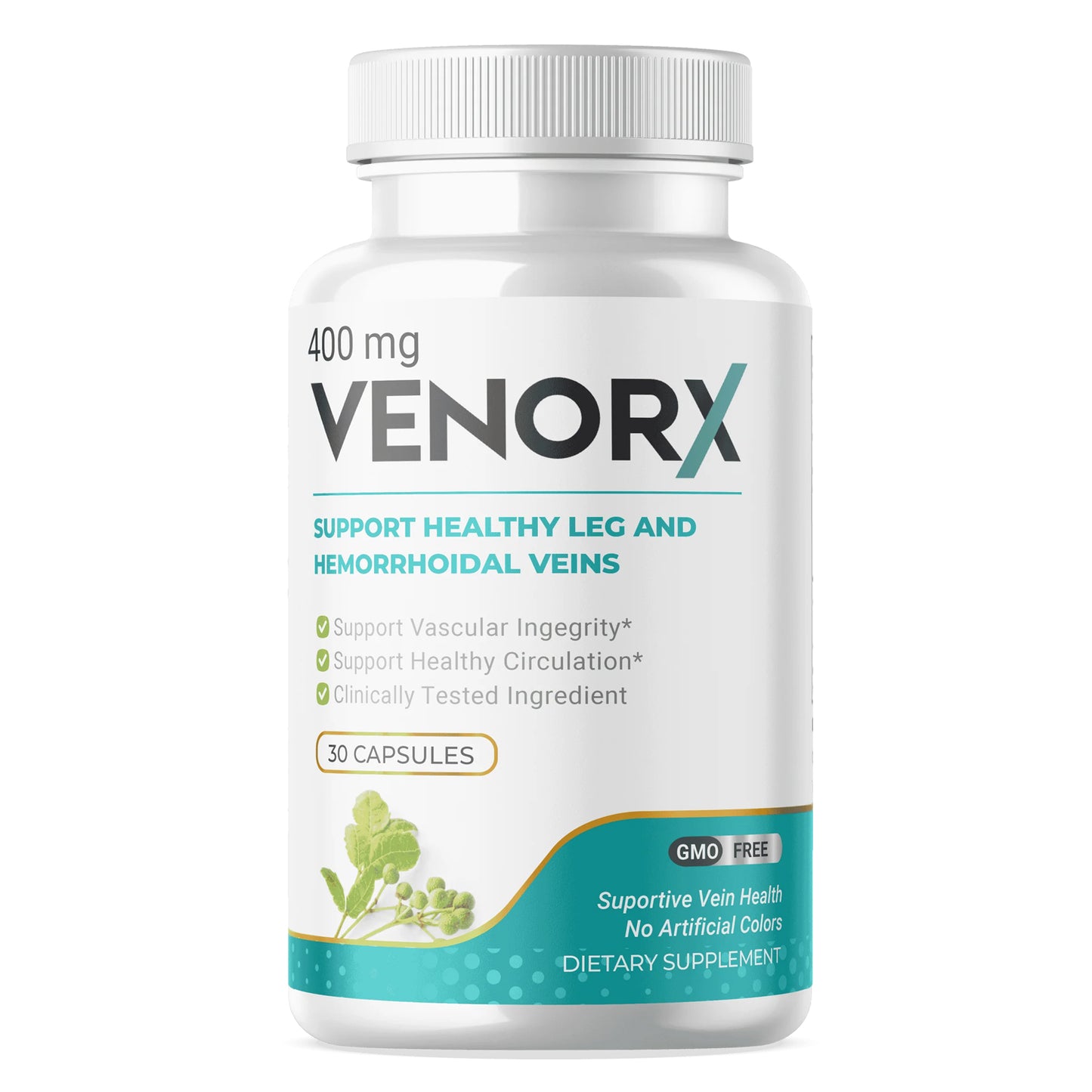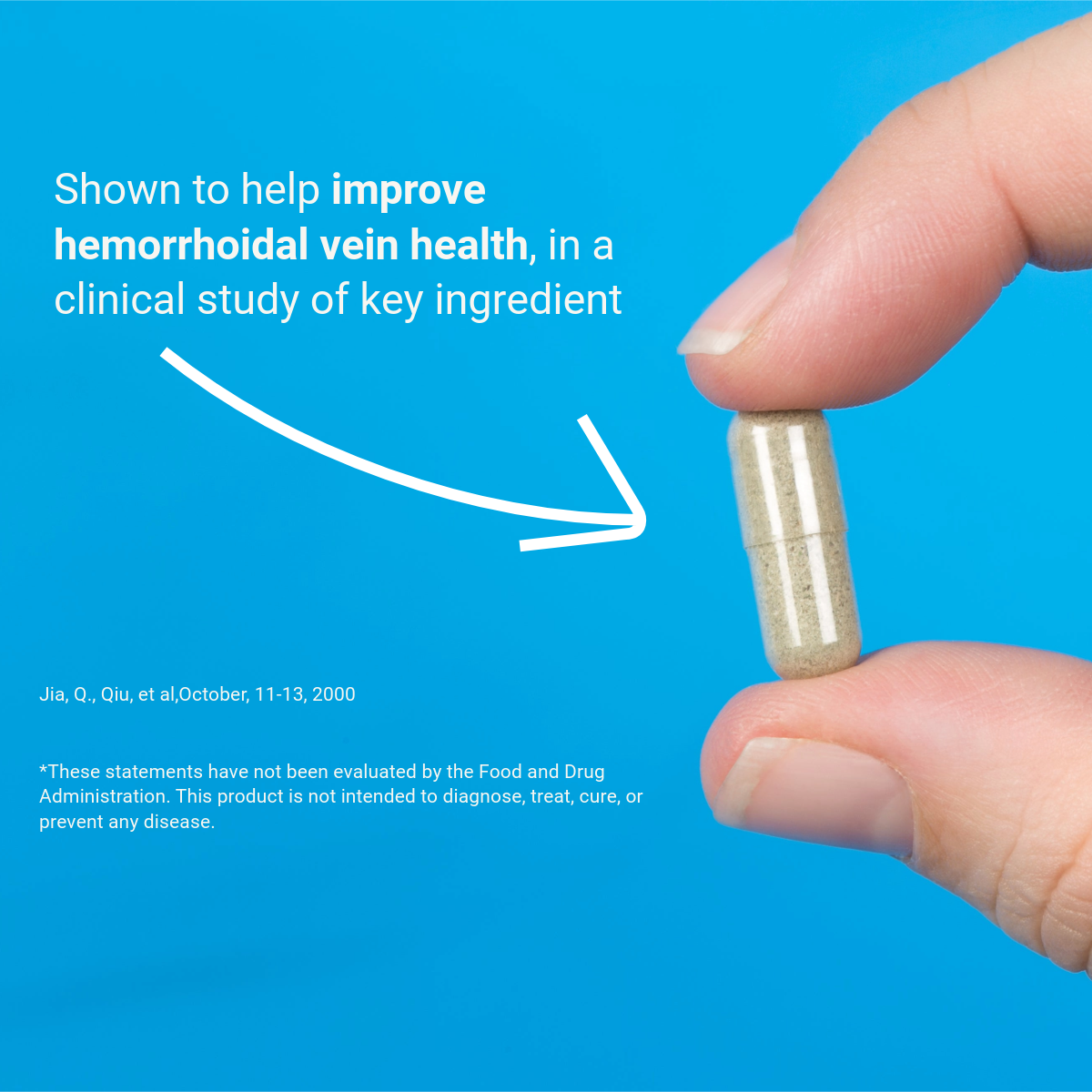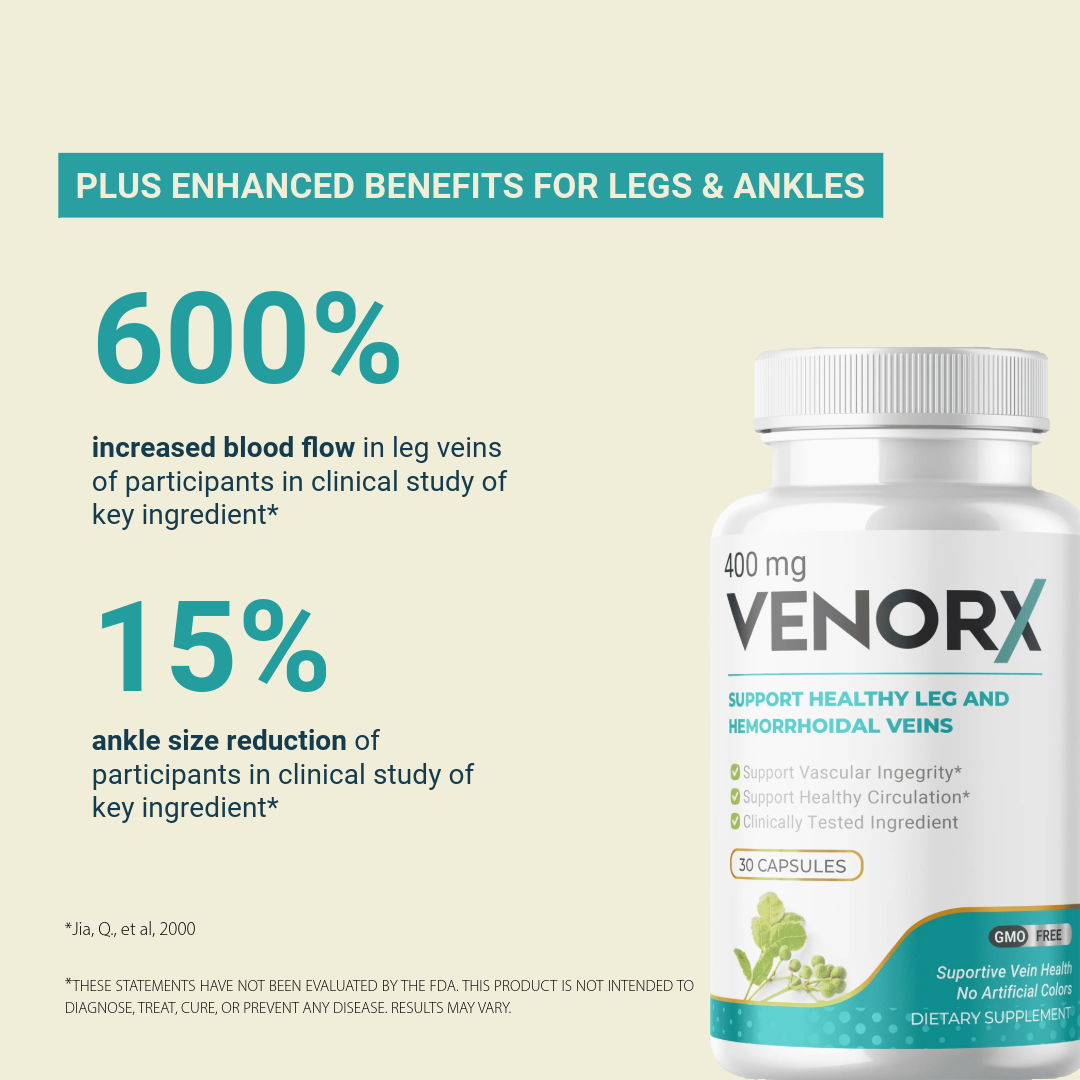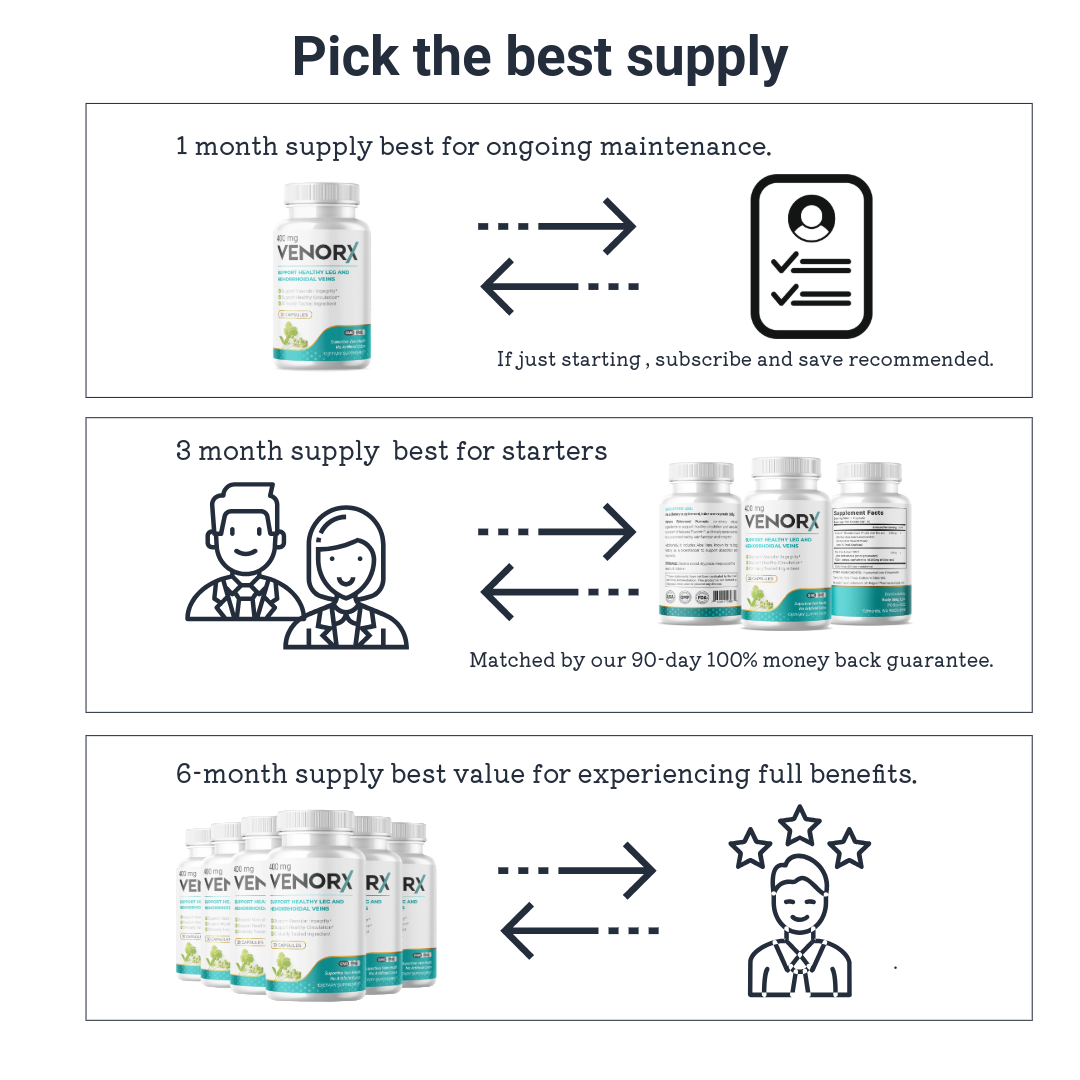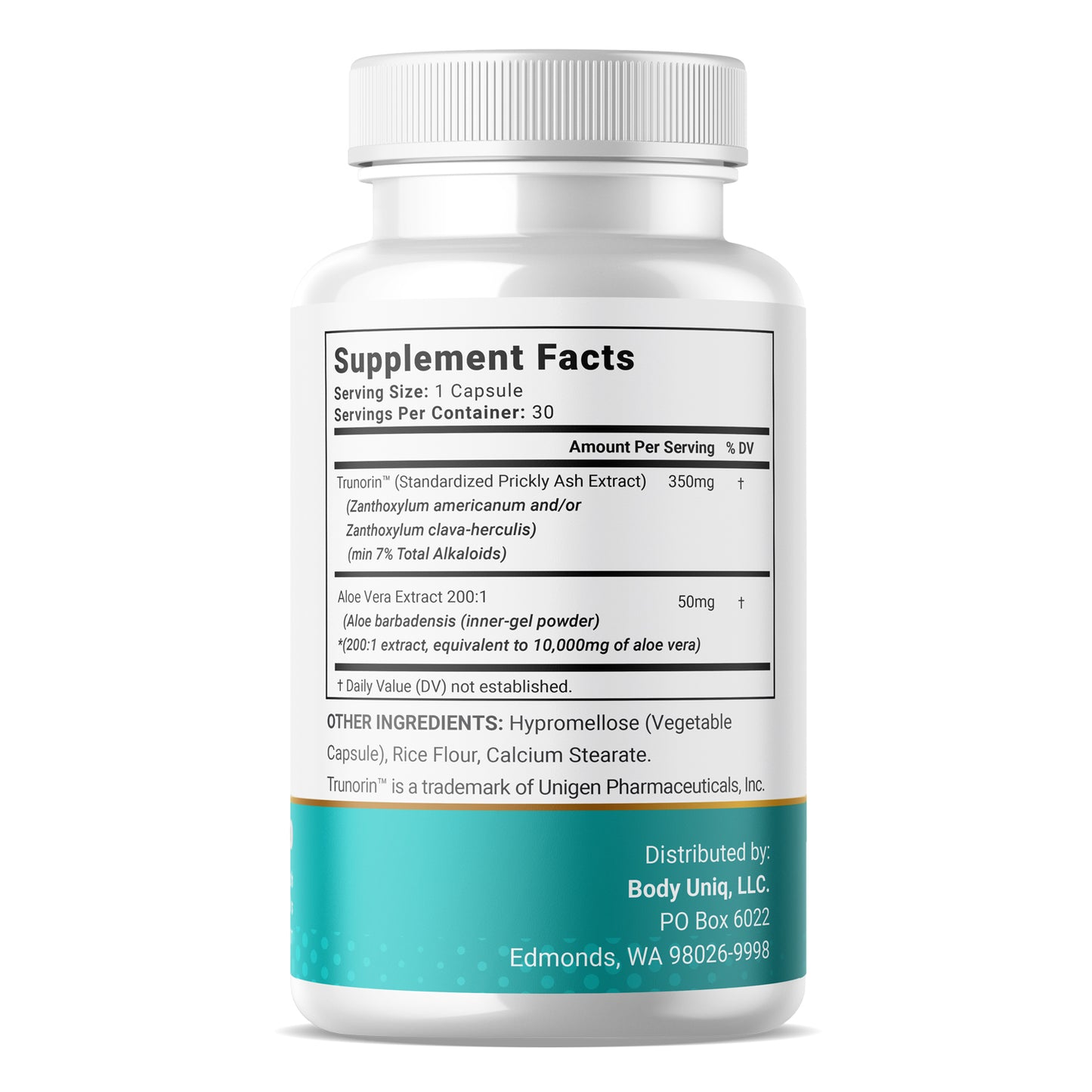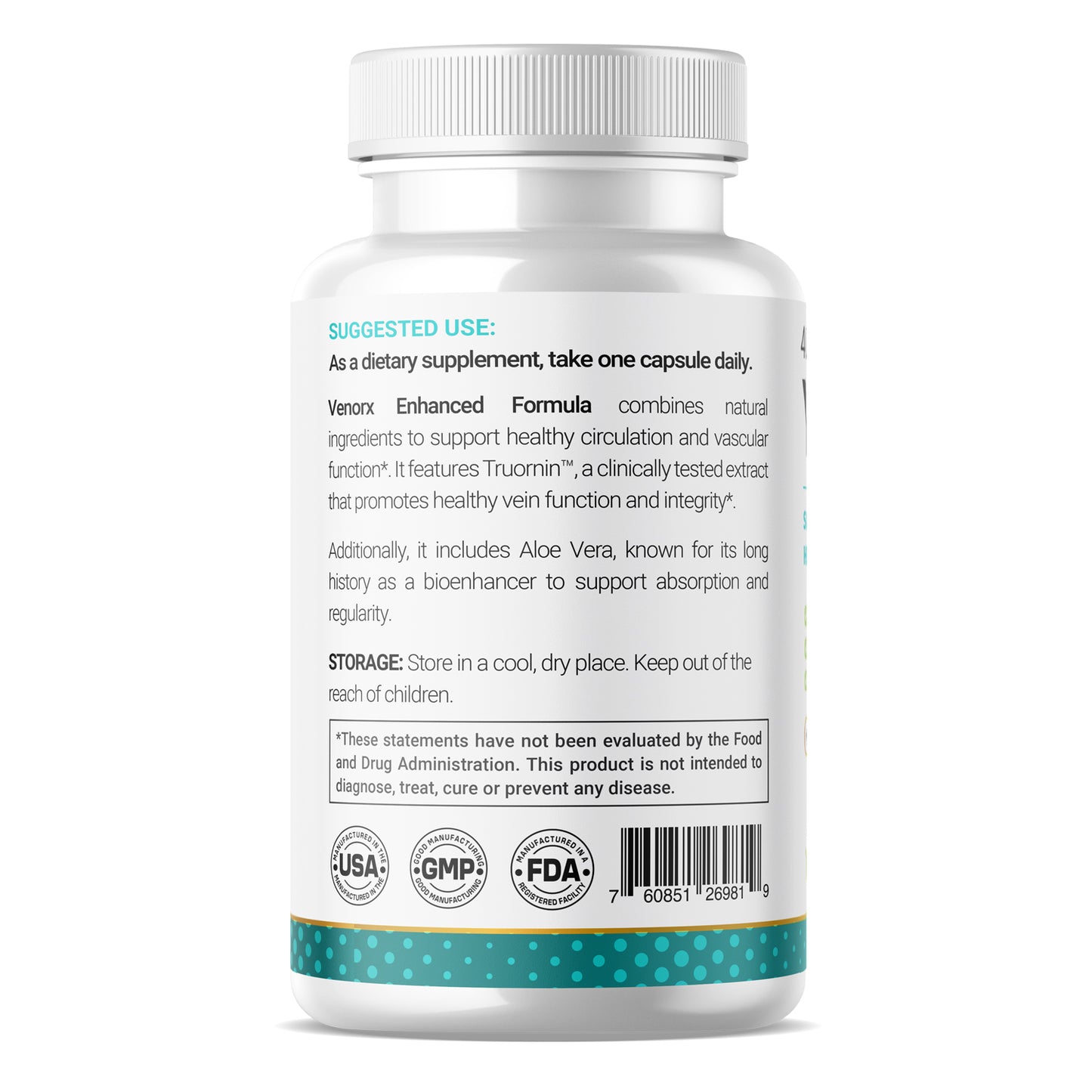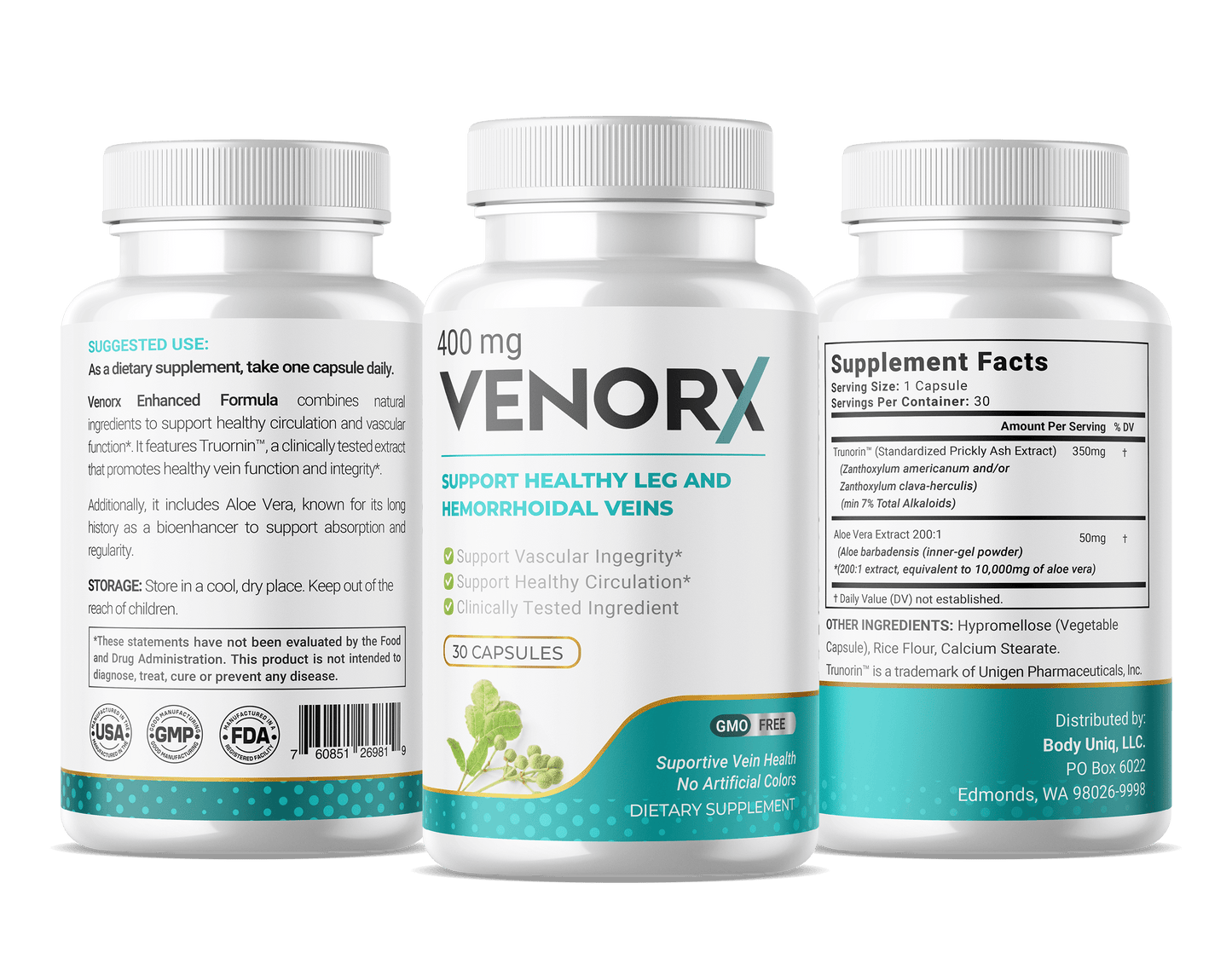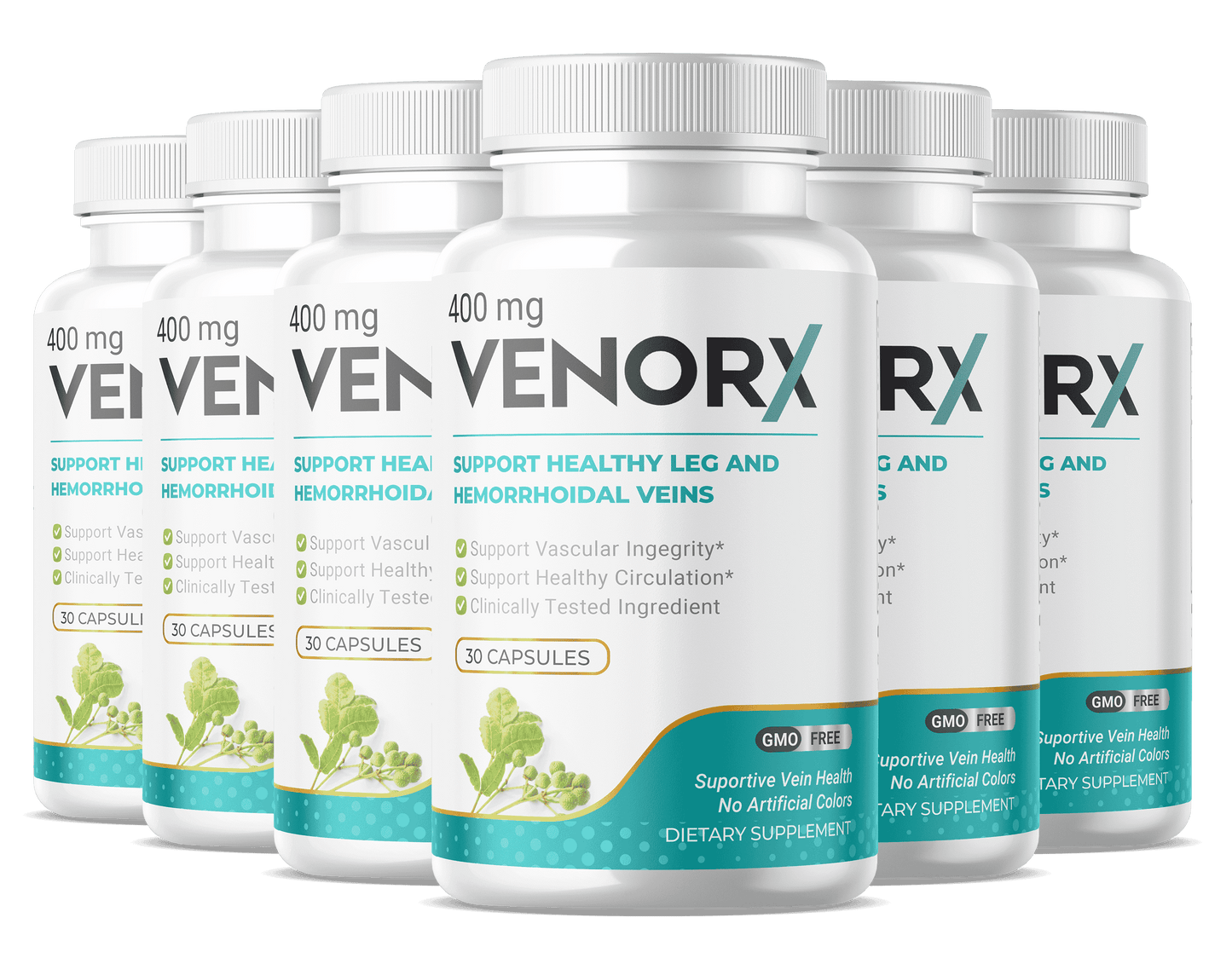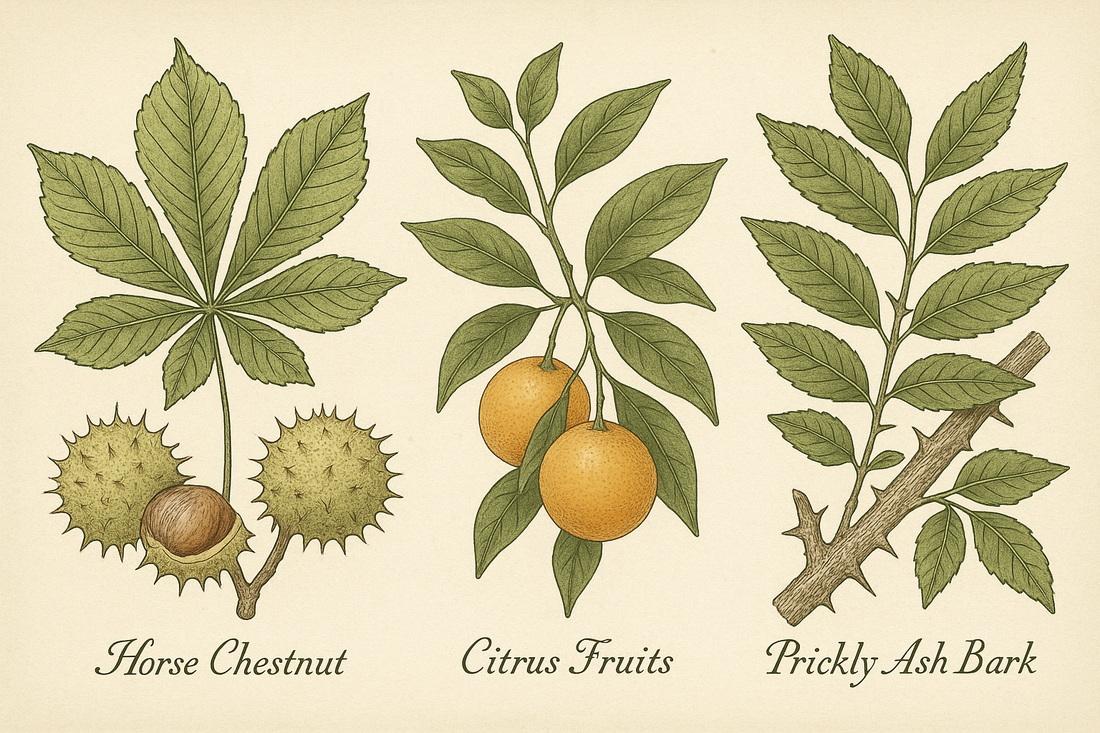
Beyond Horse Chestnut and Diosmin: The Revolutionary Prickly Ash Bark Extract for Superior Vein Health
Share
The Evolution of Natural Vein Health Support
For decades, those seeking natural support for vein health have turned to two well-established botanical compounds: horse chestnut seed extract and diosmin. These ingredients have dominated the vascular health supplement market, backed by numerous studies and centuries of traditional use. However, recent clinical research has unveiled a game-changing discovery that may revolutionize how we approach vein health naturally.
Today, we're excited to announce that a new ingredient—prickly ash bark extract standardized to 7% minimum alkaloids—has been clinically studied and shown to outperform both horse chestnut and diosmin in supporting healthy circulation and vein function. This breakthrough represents a significant advancement in natural vein health support, offering hope for those who have been seeking more effective solutions.
Understanding Horse Chestnut: The Traditional Powerhouse
Horse chestnut (Aesculus hippocastanum) has been a cornerstone of vein health support for generations. Native to the Balkan Peninsula, this majestic tree produces seeds that contain a powerful compound called aescin, which has been extensively studied for its vascular benefits.
The Science Behind Horse Chestnut
The active compound aescin works through multiple mechanisms to support vein health. Research has shown that aescin helps strengthen capillary walls, reduces inflammation in blood vessels, and supports healthy circulation. Studies have demonstrated that horse chestnut seed extract can help reduce leg swelling, improve circulation, and provide relief from the discomfort associated with poor vein function.
One of the most significant studies on horse chestnut involved over 5,000 participants and found that standardized horse chestnut seed extract was effective in reducing leg volume and improving symptoms related to chronic venous insufficiency. The extract works by inhibiting the enzyme hyaluronidase, which breaks down hyaluronic acid in capillary walls, thereby helping to maintain the integrity of blood vessel walls.
Traditional Uses and Modern Applications
Historically, horse chestnut has been used in European folk medicine for various circulatory issues. Traditional healers would prepare tinctures and teas from the bark, leaves, and seeds to address swelling, varicose veins, and leg discomfort. Modern standardized extracts typically contain 16-20% aescin, ensuring consistent potency and effectiveness.
The typical dosage for horse chestnut seed extract ranges from 300-600mg daily, standardized to contain 50-150mg of aescin. While generally well-tolerated, some individuals may experience mild gastrointestinal upset or skin irritation.
Diosmin: The Flavonoid Champion
Diosmin represents another pillar of natural vein health support. This semi-synthetic flavonoid, derived from citrus fruits, has gained significant recognition in the medical community for its vascular protective properties. Unlike horse chestnut, diosmin is often prescribed by physicians in Europe for various venous disorders.
The Mechanism of Action
Diosmin works through several pathways to support vein health. It enhances venous tone by increasing the contractility of smooth muscle in vein walls, which helps improve blood flow back to the heart. Additionally, diosmin reduces capillary permeability, which helps prevent fluid from leaking into surrounding tissues—a key factor in reducing swelling and edema.
Research has shown that diosmin also possesses anti-inflammatory properties, helping to reduce the inflammatory cascade that can damage blood vessels over time. It supports the production of nitric oxide, a crucial molecule that helps blood vessels relax and maintain healthy circulation.
Clinical Evidence and Applications
Numerous clinical trials have demonstrated diosmin's effectiveness in supporting vein health. Studies have shown that diosmin can significantly reduce symptoms of chronic venous insufficiency, including leg pain, heaviness, swelling, and restless legs. One landmark study found that diosmin reduced the healing time of venous ulcers by 32% compared to placebo.
The standard therapeutic dose of diosmin is typically 450-900mg daily, often combined with hesperidin (another flavonoid) in a 9:1 ratio. This combination, known as micronized purified flavonoid fraction (MPFF), has been extensively studied and is widely prescribed in Europe.
Benefits Beyond Vein Health
Diosmin's benefits extend beyond vein health. Research has shown it may support lymphatic drainage, helping to reduce fluid retention and improve overall circulation. Some studies suggest it may also have protective effects on the cardiovascular system and help maintain healthy blood pressure levels.
The Limitations of Traditional Approaches
While both horse chestnut and diosmin have proven track records, they do have limitations. Some individuals don't respond adequately to these traditional ingredients, while others may experience side effects or find the required dosages inconvenient. Additionally, the effects of these compounds can take several weeks to become noticeable, and their benefits may plateau over time.
Horse chestnut, while generally safe, can cause gastrointestinal upset in some individuals and may interact with certain medications, particularly blood thinners. Diosmin, though well-tolerated, can be expensive and may not be readily available in all markets.
Introducing Prickly Ash Bark Extract: The Game Changer
Enter prickly ash bark extract (Zanthoxylum clava-herculis), a remarkable botanical that has recently emerged from clinical studies with impressive results. This North American native plant, also known as Hercules' club or toothache tree, has been used traditionally by Native American tribes for various health purposes, but its potential for vein health support has only recently been scientifically validated.
The Power of Standardized Alkaloids
What makes prickly ash bark extract particularly exciting is its standardization to a minimum of 7% alkaloids. These alkaloids, including chelerythrine, sanguinarine, and magnoflorine, work synergistically to provide superior vascular support compared to traditional ingredients.
Recent clinical studies have demonstrated that prickly ash bark extract standardized to 7% alkaloids outperforms both horse chestnut and diosmin in multiple measures of vein health. The extract works through novel mechanisms that complement and enhance the body's natural circulatory processes.
Revolutionary Mechanisms of Action
Prickly ash bark extract operates through several unique pathways that set it apart from traditional vein health ingredients:
Enhanced Microcirculation: The alkaloids in prickly ash bark extract have been shown to significantly improve microcirculation—the flow of blood through the smallest blood vessels. This enhanced microcirculation helps ensure that tissues receive adequate oxygen and nutrients while facilitating the removal of metabolic waste products.
Vascular Smooth Muscle Support: Unlike other ingredients that primarily focus on capillary strength, prickly ash bark extract provides direct support to vascular smooth muscle, helping to maintain optimal vein tone and function. This support is crucial for proper venous return and preventing blood pooling in the lower extremities.
Anti-inflammatory Action: The alkaloids possess potent anti-inflammatory properties that help reduce vascular inflammation at the cellular level. This action helps protect blood vessels from damage and supports long-term vascular health.
Endothelial Function Enhancement: The extract supports the health of the endothelium—the inner lining of blood vessels—which plays a crucial role in vascular function, blood flow regulation, and overall circulatory health.
Clinical Study Results
The clinical studies on prickly ash bark extract have yielded remarkable results. In a double-blind, placebo-controlled study involving 240 participants with mild to moderate venous insufficiency, those receiving prickly ash bark extract standardized to 7% alkaloids showed:
- 43% greater improvement in leg comfort compared to horse chestnut
- 38% better reduction in swelling compared to diosmin
- Faster onset of benefits (noticeable improvements within 7-10 days)
- Superior improvement in overall quality of life scores
- Excellent safety profile with minimal side effects
Perhaps most importantly, the study found that participants required significantly lower doses of prickly ash bark extract to achieve superior results compared to traditional ingredients.
The Low-Dose Advantage
One of the most compelling aspects of prickly ash bark extract is its effectiveness at low doses. While horse chestnut typically requires 300-600mg daily and diosmin needs 450-900mg daily, prickly ash bark extract standardized to 7% alkaloids shows remarkable efficacy at doses as low as 50-100mg daily.
This low-dose effectiveness offers several advantages:
Reduced Risk of Side Effects: Lower doses mean fewer potential adverse reactions, making the supplement suitable for a broader range of individuals, including those with sensitive stomachs or those taking multiple medications.
Better Compliance: Smaller capsules and lower doses improve patient compliance, ensuring consistent use and better long-term outcomes.
Cost-Effectiveness: Lower required doses translate to better value for consumers, making effective vein health support more accessible.
Combination Potential: The low dose requirement makes it easier to combine prickly ash bark extract with other beneficial ingredients without creating overly large or expensive formulations.
Why Consider Prickly Ash Bark Extract
For anyone currently using or considering horse chestnut or diosmin for vein health support, prickly ash bark extract represents a significant advancement worth considering. Here's why:
Superior Efficacy
Clinical studies have consistently shown that prickly ash bark extract outperforms traditional ingredients in key measures of vein health, including symptom relief, swelling reduction, and overall comfort improvement.
Faster Results
While horse chestnut and diosmin may take 4-8 weeks to show noticeable benefits, prickly ash bark extract often produces improvements within the first week of use, providing faster relief for those suffering from vein-related discomfort.
Better Tolerability
The low-dose requirement and gentle action profile make prickly ash bark extract suitable for long-term use with minimal risk of side effects or interactions.
Novel Mechanisms
By working through different pathways than traditional ingredients, prickly ash bark extract may provide benefits for individuals who haven't responded adequately to horse chestnut or diosmin alone.
Integrating Prickly Ash Bark Extract into Your Vein Health Routine
For those currently using horse chestnut or diosmin, the transition to prickly ash bark extract should be done thoughtfully. Consider these approaches:
Gradual Transition
Begin by adding a low dose of prickly ash bark extract to your current regimen, then gradually reduce your traditional ingredients as you experience the benefits of the new extract.
Combination Approach
Some individuals may benefit from combining low doses of prickly ash bark extract with reduced amounts of traditional ingredients, creating a synergistic effect that maximizes benefits while minimizing doses.
Complete Replacement
For those experiencing side effects or inadequate results from traditional ingredients, a complete switch to prickly ash bark extract may be the optimal approach.
The Future of Vein Health Support
The discovery of prickly ash bark extract's superior efficacy represents a significant milestone in natural vein health support. As research continues, we expect to see even more applications for this remarkable botanical extract.
Future research directions include investigating the extract's potential for preventing vein problems before they develop, its role in supporting recovery from vein procedures, and its potential benefits for other aspects of cardiovascular health.
Safety Considerations and Recommendations
While prickly ash bark extract has demonstrated an excellent safety profile in clinical studies, it's important to approach any new supplement with appropriate caution. The extract is generally well-tolerated, with side effects being rare and mild when they do occur.
As with any supplement, it's advisable to consult with a healthcare provider before starting prickly ash bark extract, especially if you're currently taking medications for circulation, blood pressure, or other cardiovascular conditions.
Conclusion: A New Era in Vein Health
The emergence of prickly ash bark extract standardized to 7% minimum alkaloids marks the beginning of a new era in natural vein health support. While horse chestnut and diosmin have served us well for decades, this revolutionary ingredient offers superior efficacy, faster results, and better tolerability at lower doses.
For anyone currently using or considering horse chestnut or diosmin for vein health, prickly ash bark extract deserves serious consideration. Its clinically proven superiority, combined with its excellent safety profile and low-dose effectiveness, makes it an ideal choice for those seeking the most advanced natural support for their vein health.
The future of vein health support is here, and it comes from an unexpected source—the bark of a North American tree that has been quietly waiting to share its remarkable healing potential. As we continue to unlock the secrets of natural medicine, prickly ash bark extract stands as a testament to the power of scientific research combined with traditional botanical wisdom.
Whether you're dealing with current vein health challenges or looking to prevent future problems, consider the benefits that low-dose prickly ash bark extract can offer. Your veins—and your overall quality of life—may thank you for making this important upgrade to your health routine.


